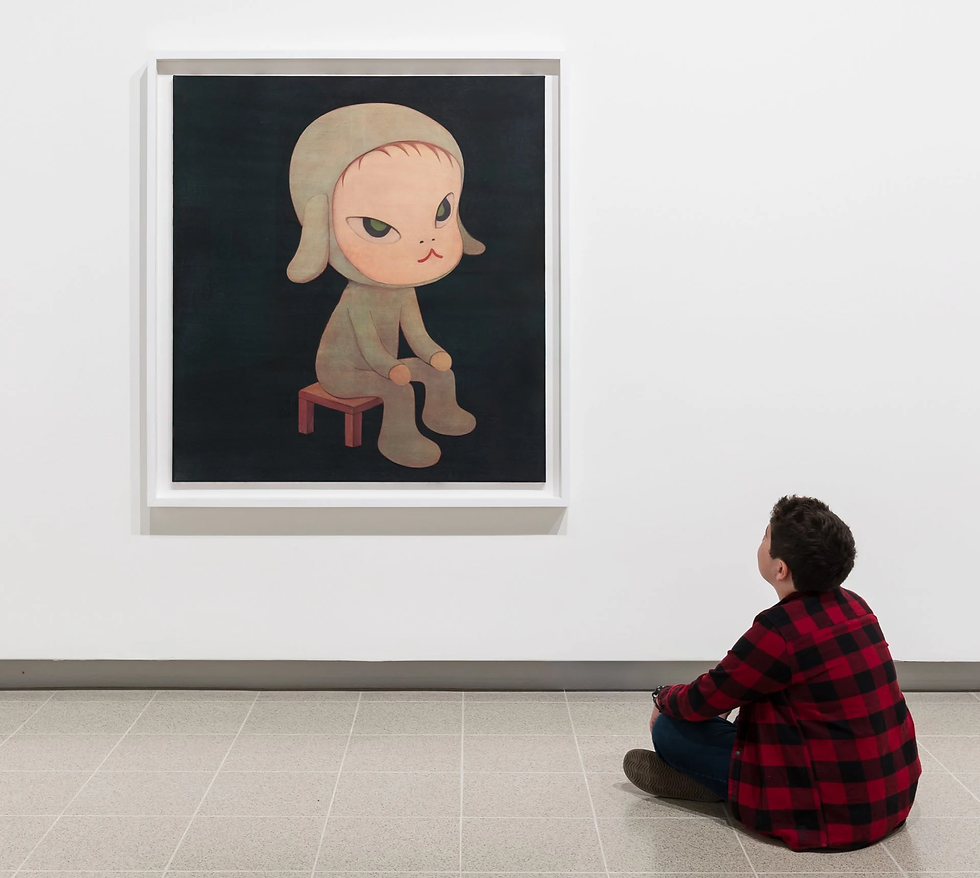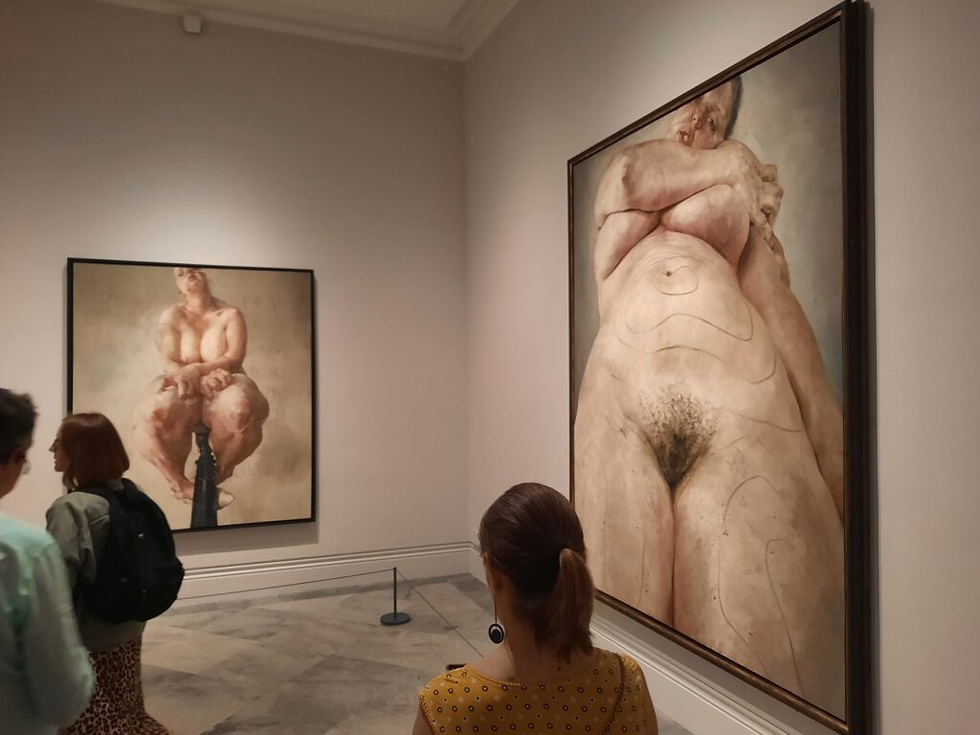The two must-see Londonian shows of this summer
- Yoann Guez
- Jul 24
- 4 min read
Yoshitomo Nara—Reach Out to the Moon, Even If We Can't
Hayward Gallery (June 10—August 31, 2025)

Yoshitomo Nara’s first major UK survey spans over more than four decades of his signature blend of charm and defiance, featuring over 150 works—including drawings, paintings, sculptures, installation and ceramics.

Titled Reach Out to the Moon, Even If We Can’t, the exhibition opens with a recreation of Nara’s studio, a chaotic artist’s shack strewn with beer cans, lyric sheets, sketches and accompanied by a soundtrack pulsing with Nick Drake and the Ramones. With this first glimpse into the creative world of Nara, the tone of the survey is set: this is no sweet and light “kawaii” show of cute childish figures, but rather something nourished by the reflective emotional life of an adult in dialogue with his inner child. One great example of this is the impact that the Tohoku earthquake had on his work. In Nara’s interview with curator Yung Ma featured in the exhibition catalogue, the artist explains that this event encouraged him to recentre around what his work really meant for him, in a less audience-centric way. He cites his collaboration with graf at the time as a moment where he drifted away from a more direct, authentic form of expression. The catastrophe forced him to think a lot about many issues Japan was faced with at the time, and also how attached he felt to his hometown and its region, which also brought him back to his childhood feelings.

During the exhibition, you encounter Nara’s trademark big-eyed, sullen children wielding guitars, knives or protest slogans—images that flirt with innocence but also come from punk-fueled tension. These characters, set against calm pastel backgrounds, convey anger, loneliness, and political disquiet with emotional directness. The show resonates thus with a balance between youthful rebellion and quiet introspection. Mid-90s portraits that almost evoke Basquiat in cartoony aesthetics sit alongside recent, Fukushima-inspired works, now more subdued and haunted.

A forest of drawings—on envelopes, scrap cardboard and sketchbooks—traces Nara’s evolution, each one an intimate snapshot of his psyche. Key pieces that made Nara’s acclaim illustrate his journey:

No Nukes (1998) vibes with protest fury, while the impressive sculpture Fountain of Life (2001/14/22) weaves spiritual tones into his idiosyncratic style of childlike figures. It’s the perfect mix: something you can enjoy at face value, but also dig into emotionally if you spend more time with the works. Ultimately, Nara’s work feels both accessible and deep. Cute aesthetics? Yes—but mixed with longing, politics, loneliness and memory. It’s a multi-layered, more-than-fun survey that proves the Japanese artist’s cult appeal has substance.
Jenny Saville—The Anatomy of Painting
National Portrait Gallery (June 20—September 7, 2025)

Jenny Saville’s largest UK museum exhibition to date gathers 45 works of the British painter across three decades of her career, providing a journey into her developments from the early 1990’s until today. Entitled The Anatomy of Painting, the show gives a strong account of what Saville’s art is about: a practice focused on the body and rooted in figuration, but never content with a stable presentation of the human figure.

Organized chronologically, The Anatomy of Painting invites you first into the artist’s early career. One can for instance gaze upon the landmark Propped (1992), a monumental self-portrait that not only stunned Charles Saatchi and brought her critical acclaim when she was in her early twenties, but also did a lot to reshape the discourse on beauty, identity, and body politics. Other early paintings, such as Plan (1993), interrogate flesh as if it were a landscape, mapping volumes and textured skin with both pathos and cold scrutiny. Saville’s images from that decade confront viewers with an unidealized outlook on the female body, challenging aesthetic norms with unapologetic authenticity and scale.

Moving into the 2000s, Saville shifts her focus to heads. Gigantic, towering portraits such as Witness (2009)—a headshot evoking photo reports of a crime-scene —stop you dead in your tracks. These images play on a strong form of ambivalence: the intimacy of a close up on a massive scale. This tension goes hand-in-hand with that of the subject matter: these images feel like they could be from the point of view of someone close to the “victim”, or from a clinical scientific account of wounded flesh. Complementing these grand canvases are pastel and charcoal drawings displaying the depth of Saville’s technique. These various neck studies, mother-and-child sketches, or delicate figure studies of lovers in bed feel almost sculptural, grounding the exhibition in quietude and precision. They offer breathing space, a softer dance between figuration and abstraction, and an insight into what has been Saville’s drawing process in more recent years.

By the end of the show, you arrive at her latest works—rich, layered portraits like Eve or Virtual (2020), which blend photography, memory, identity and sci-fi glitches into fleshlike abstractions. In this new series which showcases how willing she is to continue to explore new avenues, the artist gives an account of corporeality in the digital age. From shock and defiance to nuanced tenderness, the figurative art of Saville never shies away from complexity, holding the weight of vulnerability and violence all at once.




Comments